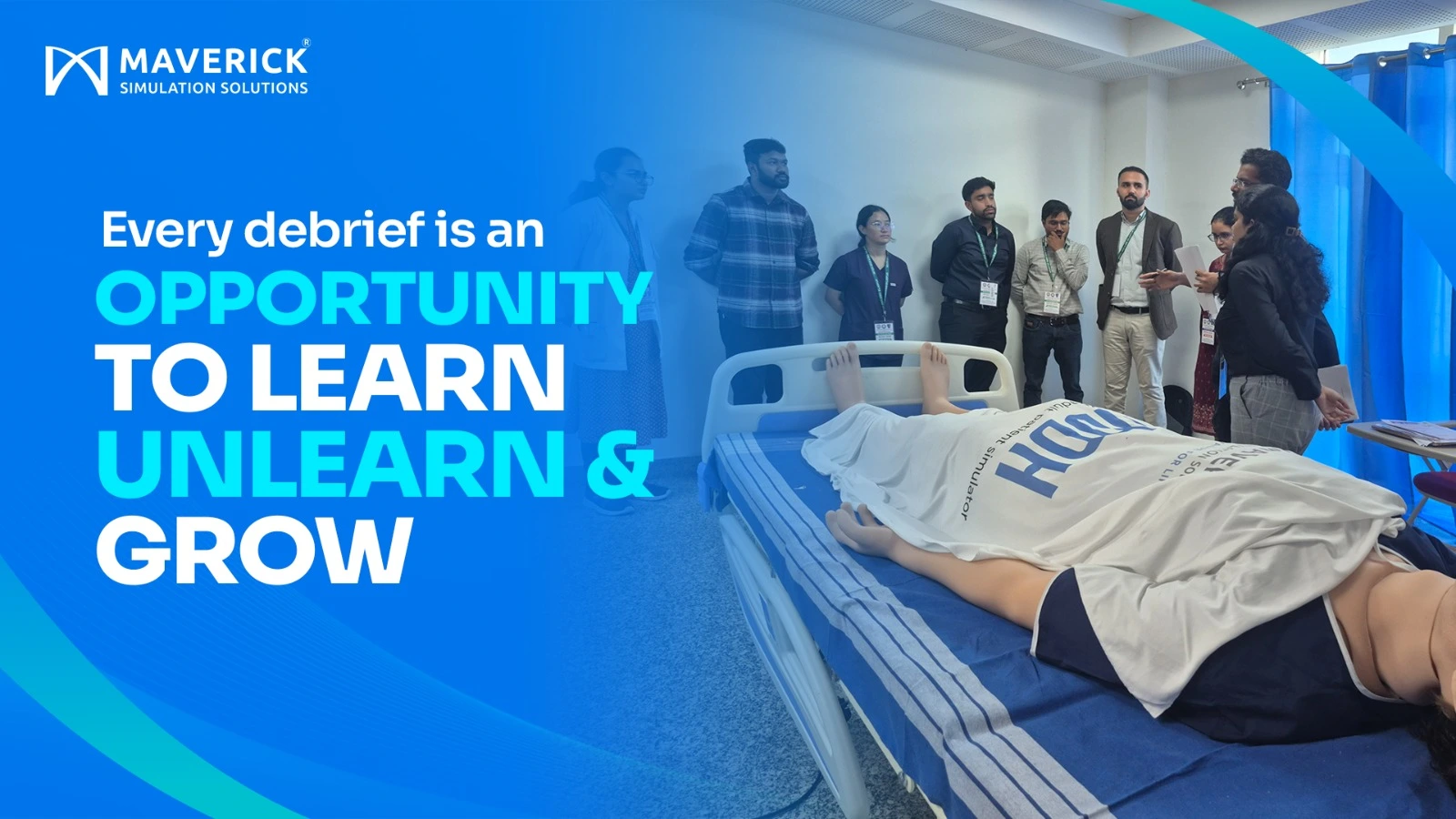Ultimate Guide: Low Fidelity vs High Fidelity Simulators – Best Training Choice

Introduction
Simulation debriefing techniques are the backbone of simulation-based medical education. While simulations allow learners to practice clinical skills in a safe and controlled environment, debriefing transforms that practice into true learning.
In the Indian medical education context, where simulation labs are rapidly evolving, effective debriefing can bridge the gap between theoretical knowledge and practical application. This blog will guide you through best practices, models, and strategies for impactful simulation debriefing tailored for Indian medical educators.
What Is Debriefing in Simulation?
Debriefing is the structured post-simulation discussion that allows learners to reflect, analyze, and understand their performance. It’s not just about pointing out mistakes — it’s about promoting reflective learning, improving decision-making, and developing clinical reasoning.
Effective simulation debriefing techniques ensure that every simulation session delivers measurable educational value.
Why Simulation Debriefing Techniques Matter in India?
Medical education in India is undergoing a transformation with increased adoption of simulation-based training. However, without proper debriefing, simulations can become mere “practice sessions” rather than powerful learning experiences.
Strong debriefing methods help Students:
- Improve knowledge retention and recall
- Develop critical thinking and teamwork
- Foster a safe, blame-free learning environment
- Identify performance gaps and solutions
Core Principles of Effective Simulation Debriefing
1. Psychological Safety First
Before the session begins, establish a non-judgmental environment. Students should feel safe to discuss errors openly. Phrases like “This is a learning space, not a testing space” go a long way.
2. Reflective Discussion
Encourage learners to analyze their decisions rather than simply recounting what happened. Use open-ended questions like:
“What was your thought process when you decided to administer that medication?”
3. Structured Frameworks
Following a structured framework such as GAS (Gather–Analyze–Summarize) or PEARLS (Promoting Excellence and Reflective Learning in Simulation) helps standardize debriefing and ensures all critical elements are covered.
Popular Simulation Debriefing Techniques
1. The Plus-Delta Technique
One of the simplest yet effective simulation debriefing techniques, this method encourages learners to identify what went well (“Plus”) and what can be improved (“Delta”).
It promotes self-assessment and collective reflection.
2. The Advocacy-Inquiry Approach
This technique involves the facilitator sharing their observations and then inviting the learner’s perspective. Example:
“I noticed there was a delay in calling for help — I’m curious what you were considering at that moment?”
It creates a collaborative, two-way dialogue instead of a top-down critique.
3. The GAS Model (Gather–Analyze–Summarize)
- Gather: Collect facts and reactions
- Analyze: Explore performance and decision-making
- Summarize: Reinforce key lessons and actionable takeaways
4. The 3D Model (Defusing–Discovering–Deepening)
Used widely in medical education, this method focuses on emotional processing first (defusing), understanding thought processes (discovering), and finally linking to future practice (deepening).
Best Practices for Indian Medical Educators
1. Customize Debriefing to Indian Learner Culture
In many Indian classrooms, students are hesitant to express opinions or admit mistakes. As a facilitator, actively encourage participation by asking inclusive, supportive questions.
2. Combine English and Regional Languages
Bilingual debriefing (English + local language) helps students articulate thoughts more freely, especially in early learning stages.
3. Integrate Video-Assisted Debriefing
Video recordings of simulation sessions can be replayed for performance analysis. This visual reflection strengthens self-awareness and skill correction.
4. Train the Trainers
Not all educators are naturally skilled debriefers. Institutions should provide formal debriefing workshops or certification programs to improve facilitation quality.
5. Focus on Emotional Intelligence
Debriefing isn’t just about clinical outcomes — it’s about understanding human behavior, teamwork, and empathy during stressful medical situations.
Common Challenges in Simulation Debriefing
Challenge
Solution
Learners hesitant to share mistakes
Build trust and psychological safety
Time constraints
Specific skill practice – IV, intubation, suturing
Educator bias
Use standardized rubrics for feedback
Limited training
Attend debriefing skill workshops or webinars
To understand how simulation-based training can enhance clinical outcomes, explore our Comprehensive Guide on Medical Simulation Training .
For international standards on simulation debriefing, refer to:
Society for Simulation in Healthcare (SSH)
Tips to Make Debriefing More Impactful
- Use real-life examples or Indian medical case studies.
- Allow students to self-debrief before facilitator input.
- Keep sessions short (15–30 minutes) and focused.
- Always end with actionable takeaways.
Conclusion
The success of any simulation-based program depends on effective simulation debriefing techniques. For Indian medical educators, mastering these methods can create a culture of reflection, safety, and continuous learning.
Debriefing transforms a clinical scenario into a lasting learning experience — one that prepares students not just to treat patients, but to think, decide, and collaborate like real-world clinicians.
In short: Simulation creates experience, but debriefing creates expertise.
Frequently Asked Questions (FAQs)
What is the main goal of simulation debriefing?
The goal is to help learners reflect on their performance, identify areas for improvement, and connect theory to real clinical practice.
How long should a debriefing session last?
Typically, 15–30 minutes depending on the complexity of the simulation and the number of participants.
Can debriefing be done online?
Yes, with virtual simulation platforms, debriefing can be conducted through video conferencing tools, making it flexible for hybrid learning models.
How do you train faculty in debriefing?
By attending structured workshops, observing experienced facilitators, and using standardized models like GAS or PEARLS.
Why are simulation debriefing techniques important for medical educators in India?
Because they promote reflective learning, teamwork, and clinical competence — essential skills for today’s healthcare professionals.